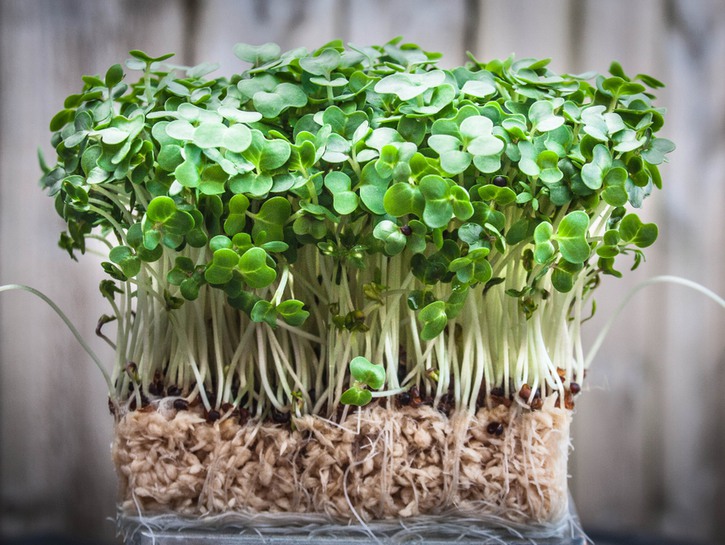We always hear about these so-called “superfoods” that are supposedly chock-full of nutrients, health benefits, and other properties that are beneficial to preserving and fortifying our bodies against all kinds of diseases and other ailments.
When you look at a list of superfoods, you’ll see things like kale, blueberries, and almonds, but there is another superfood out there that packs quite the punch: watercress.
What Is Watercress?
Watercress is an aquatic or semi-aquatic herb with bright white flowers that resemble the shape of a cross. This leafy plant can be found throughout much of the North American continent, though it is also found on multiple continents.
Is Watercress A Superfood?
Not only is watercress a superfood, it’s actually the healthiest superfood. It might not be as popular as some of the other superfoods out there, but watercress is still considered a powerhouse vegetable.
A study conducted at William Paterson University in New Jersey ranked more than 40 fruits and vegetables by their ability to fight off and prevent inflammation and diseases, and sure enough, watercress was at the the top of the list with a perfect score of 100 out of 100. So when someone says that kale is the king of all superfoods, make sure to let them know that it only received a score of 49.07.
What Does It Taste Like?
Watercress has been described as having a hot peppery taste in its leaves, which comes from the mustard oil in the plant. The flavor is milder in the younger watercress leaves, but the more mature leaves pack quite a punch.
Long used as a garnish or as an extra kick to a simple garden salad, watercress can also be used to enhance the taste of meats, sausages, and smoked fish in different parts of the world.
Where Does It Grow?
In the wild, watercress can be found in shallow running water in places like streams and small rivers. You can grow it at home in both water features and a garden.

Nutritional Value
1 cup of chopped watercress contains the following:
- Vitamin A – 1,085 international units
- Vitamin C – 14.6 miligrams
- Vitamin E – .3 milligrams
- Vitamin K – 85 microgram
- Niacin – 1 milligram
- Folate – 1 microgram
- Calcium – 8 milligrams
- Magnesium – 1 milligram
- Phosphorus – 4 milligrams
- Sodium – 9 milligrams
What Are The Benefits Of Eating Watercress?
With so many nutrients found in a single cup of chopped watercress, it’s not hard to imagine that there are quite a few health benefits of this powerful superfood.
Helps Prevent Cancer
A study published in the American Journal of Clinical Nutrition found that a daily portion of watercress can help ward off cancer by significantly reducing DNA damage to blood cells, which is considered a trigger in the development of cancer. The superfood is beneficial when added to the diet to prevent lung, breast, and stomach cancer.
Boosts Immunity
Watercress is a cruciferous vegetable, which provides us with isothiocyanates – chemicals that protect our cells from infection. Not to mention, watercress also contains vitamin C, which protects the body against diseases caused by bacteria and virus.
Lower Blood Pressure
Thanks to the high levels of dietary nitrate found in watercress, the superfood can help lower blood pressure.
May Lower Cholesterol
In addition to lowering blood pressure, watercress may also be responsible for lowering cholesterol, which can help promote a healthier cardiovascular system.
Promotes Weight Loss
With only 18 calories per 1-cup serving, watercress is a great addition to salads and other healthy snacks and meals for those looking to shed a few pounds. The fiber and amino acids found in the plant will also help you feel full for longer periods of time.
Helps Improve Vision
Immunities aren’t the only thing that gets a boost from vitamin C, as the vitamin is also key to eye health. Since our bodies don’t produce all of the vitamin C we need, it’s important to incorporate foods like watercress to help supplement the supply.
Improves Brain Health
Watercress, thanks to the high levels of vitamin C, can help prevent cognitive changes caused by age and Alzheimer’s disease.
Strengthens Bones
A diet lacking vitamin K is linked with higher risk of bone rupture, but eating more watercress, which is a great source of the key vitamin, can help enhance the absorption of calcium.

Can You Eat Raw Watercress?
Watercress can be enjoyed in a number of ways, but to answer the question, yes, it can be eaten raw. In fact, that’s one of the best ways to get the most out of this powerful superfood.
Once watercress is harvested, it doesn’t stay fresh for very long before it starts to turn. If you purchase a bundle at the store, place it in your fridge, and notice that it’s starting to wilt, simply shock the leafy plant in a bowl of ice water to bring it back to life.
In its raw form, Watercress can work well on sandwiches and in salads if you’re looking to add a tangy bitterness to liven things up.
You can also cook with watercress by pureeing it into soup, making it into a wild herb sauce, or any other dish that calls for a leafy green.
